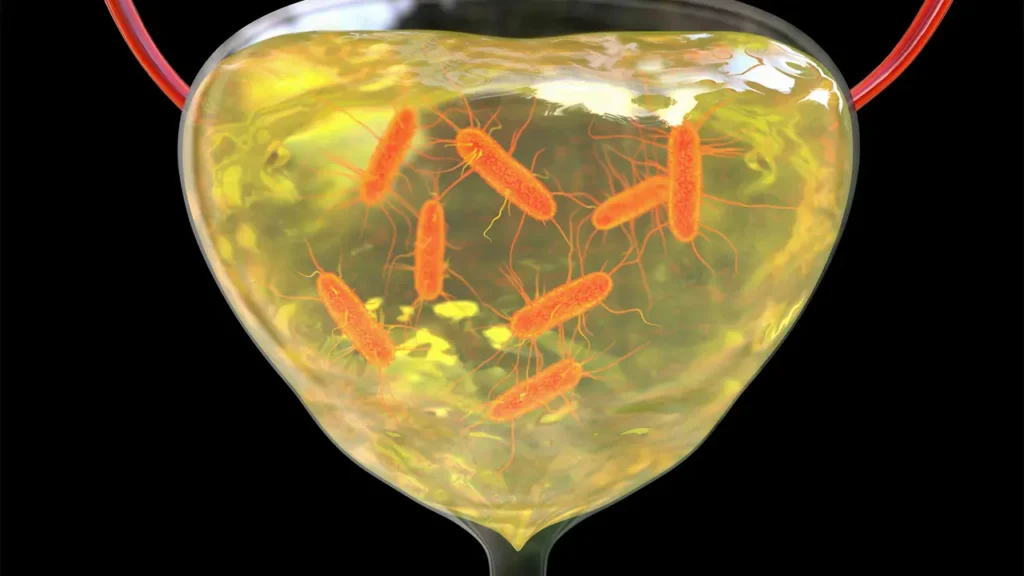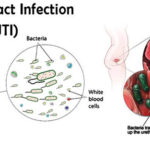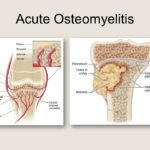Urinary tract infections (UTIs) are among the most common bacterial infections worldwide, impacting millions of individuals annually. While many UTIs are relatively straightforward to treat, some cases are more complex and can lead to significant health complications. One such condition is a complicated urinary tract infection (UTI) caused by Pseudomonas aeruginosa, a pathogenic bacterium that presents unique challenges in diagnosis, treatment, and prevention.

In this article, we will delve into the critical aspects of complicated UTIs with Pseudomonas aeruginosa, including its clinical presentation, diagnostic procedures, treatment options, and strategies for managing antibiotic resistance.
What is a Complicated UTI?
A complicated urinary tract infection (UTI) is characterized by several factors that make the infection more difficult to treat compared to uncomplicated UTIs. These factors include underlying anatomical abnormalities, comorbidities, immunosuppression, or the presence of indwelling medical devices, such as urinary catheters. In contrast, uncomplicated UTIs typically occur in healthy individuals with structurally normal urinary tracts.
Complicated UTIs often result in more severe symptoms and a higher risk of treatment failure. Among the microorganisms responsible for these infections, Pseudomonas aeruginosa is of particular concern due to its ability to cause persistent, healthcare-associated infections that are often resistant to many common antibiotics.
Pseudomonas Aeruginosa: A Dangerous Pathogen
Pseudomonas aeruginosa is a Gram-negative, opportunistic pathogen that is commonly found in hospital environments, water systems, and soil. This bacterium is known for its remarkable adaptability and resistance to a wide range of antimicrobial agents, making infections challenging to treat.
When Pseudomonas aeruginosa causes a UTI, it often complicates the clinical course due to several characteristics of the pathogen:
- Antibiotic Resistance: P. aeruginosa is notorious for its resistance to multiple classes of antibiotics, including beta-lactams, aminoglycosides, and fluoroquinolones. This resistance complicates the treatment regimens and necessitates the use of more potent and specialized antibiotics.
- Biofilm Formation: P. aeruginosa can form biofilms on urinary tract surfaces, including indwelling catheters. These biofilms protect the bacteria from both the host immune system and antibiotics, leading to chronic infections.
- Virulence Factors: The bacterium produces several virulence factors, including exoenzymes and toxins, which contribute to tissue damage and the inflammatory response, exacerbating the symptoms of a UTI.
Symptoms of Complicated UTI with Pseudomonas Aeruginosa
The clinical presentation of a complicated UTI caused by Pseudomonas aeruginosa can be more severe and persistent compared to typical UTIs. Symptoms may include:
- Dysuria (painful urination)
- Frequent urination and urgency
- Lower abdominal or pelvic pain
- Fever and chills, indicating systemic involvement
- Cloudy or foul-smelling urine, which may indicate the presence of infection
- Flank pain (pain in the side, often suggesting kidney involvement)
- Sepsis in severe cases, particularly in patients with compromised immune systems or indwelling medical devices
Patients with these symptoms should seek prompt medical attention, as the infection can escalate into more severe conditions, such as kidney damage or sepsis.
Diagnostic Approaches for Complicated UTI with Pseudomonas Aeruginosa
Proper diagnosis is essential for effective treatment. In cases of complicated UTI caused by Pseudomonas aeruginosa, healthcare providers typically use a combination of the following diagnostic methods:
1. Urine Culture and Sensitivity Testing
- The gold standard for diagnosing UTIs caused by Pseudomonas aeruginosa is a urine culture. This test isolates the pathogen from a urine sample and provides essential information about its antimicrobial susceptibility, helping guide appropriate antibiotic therapy.
2. Imaging Studies
- In complicated cases, imaging techniques, such as ultrasound or CT scans, may be used to assess the kidneys and urinary tract for anatomical abnormalities, abscesses, or obstruction, all of which can contribute to the infection.
3. Blood Cultures
- In cases where the infection has spread to the bloodstream, blood cultures are necessary to confirm the presence of bacteremia or sepsis.
4. Cystoscopy
- A cystoscopy may be performed if there is suspicion of structural abnormalities or complications involving indwelling catheters.
Treatment Strategies for Complicated UTI with Pseudomonas Aeruginosa
Treatment of UTIs caused by Pseudomonas aeruginosa is inherently challenging due to its resistance profile. The following approaches are often employed:
1. Antibiotic Therapy
- Empiric Antibiotic Therapy: Initial treatment usually involves broad-spectrum antibiotics, chosen based on the suspected pathogen and local resistance patterns. Once culture results are available, therapy is adjusted to target Pseudomonas aeruginosa specifically.
- Specific Antibiotics for Pseudomonas Aeruginosa: Common antibiotics used to treat P. aeruginosa include:
- Piperacillin-tazobactam
- Ceftazidime or cefepime
- Ciprofloxacin or levofloxacin
- Meropenem or imipenem
- Aminoglycosides like gentamicin (in severe infections)
- Combination Therapy: In some cases, a combination of antibiotics may be required, especially in severe infections or those caused by resistant strains.
2. Management of Biofilm
- Since P. aeruginosa can form biofilms on urinary tract surfaces, biofilm-targeting agents may be used in certain cases to disrupt the biofilm and enhance antibiotic effectiveness.
3. Surgical Intervention
- In rare cases, surgical intervention may be necessary to remove infected tissue, abscesses, or foreign bodies such as catheters, which serve as a breeding ground for bacteria.
4. Long-Term Management and Preventive Measures
- For patients with recurrent infections or those at high risk, long-term antibiotic prophylaxis may be considered, especially in patients with indwelling catheters.
- Strict hygiene practices and the proper use of medical devices can help prevent the introduction of P. aeruginosa into the urinary tract.
Managing Antibiotic Resistance in Pseudomonas Aeruginosa Infections
The rise of antibiotic-resistant Pseudomonas aeruginosa strains poses a significant challenge in treating complicated UTIs. Antimicrobial stewardship plays a key role in minimizing resistance and optimizing treatment outcomes. Healthcare providers must balance effective antibiotic use with efforts to avoid overuse and misuse.
Strategies to Combat Antibiotic Resistance:
- Targeted therapy: Using culture and sensitivity results to select the most effective antibiotics
- De-escalation: Reducing antibiotic use once susceptibility results are available
- Use of novel antibiotics: Exploring the use of newer agents like ceftolozane-tazobactam or meropenem-vaborbactam for resistant strains
- Infection prevention: Implementing strict infection control measures, particularly in healthcare settings

